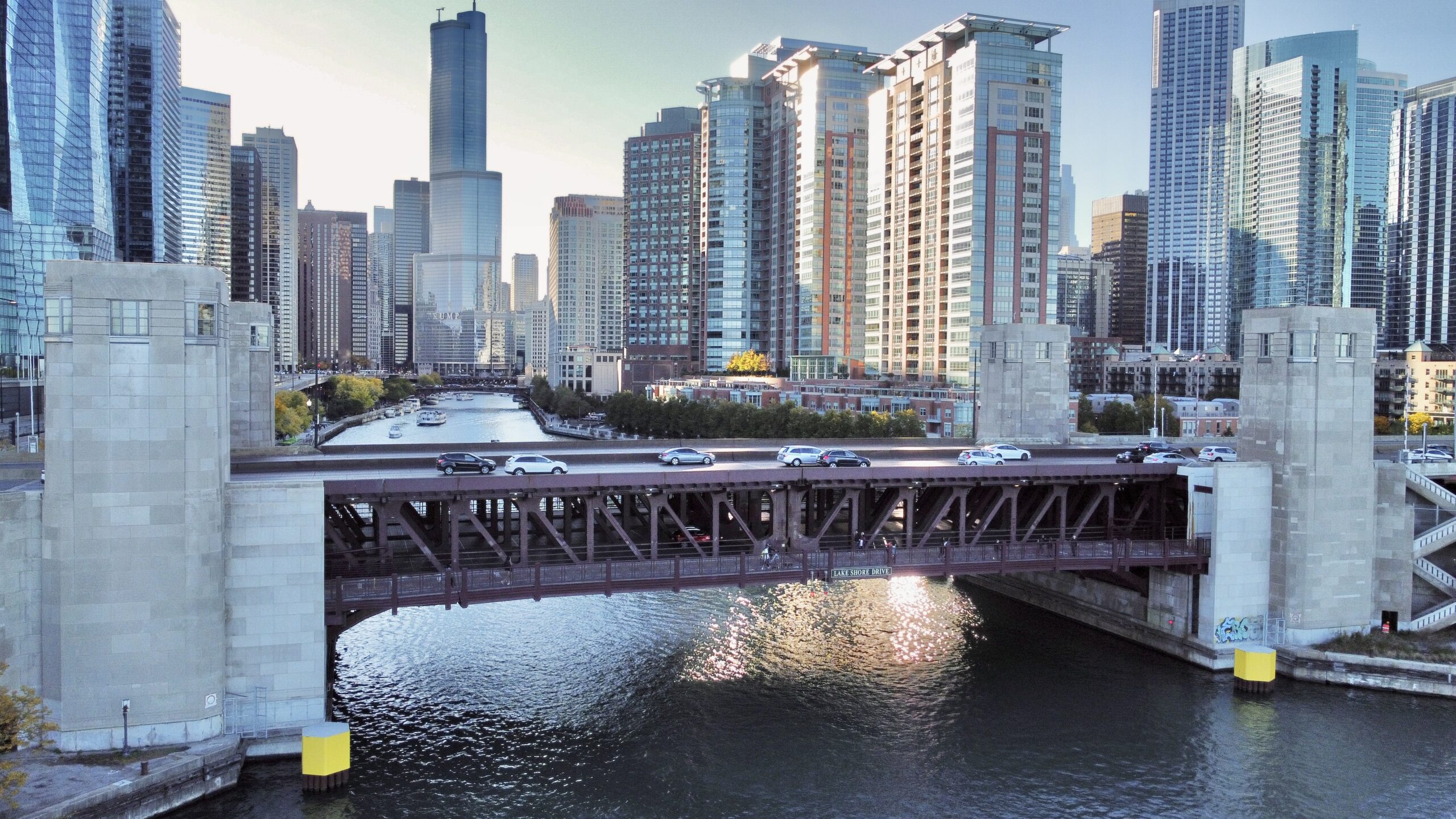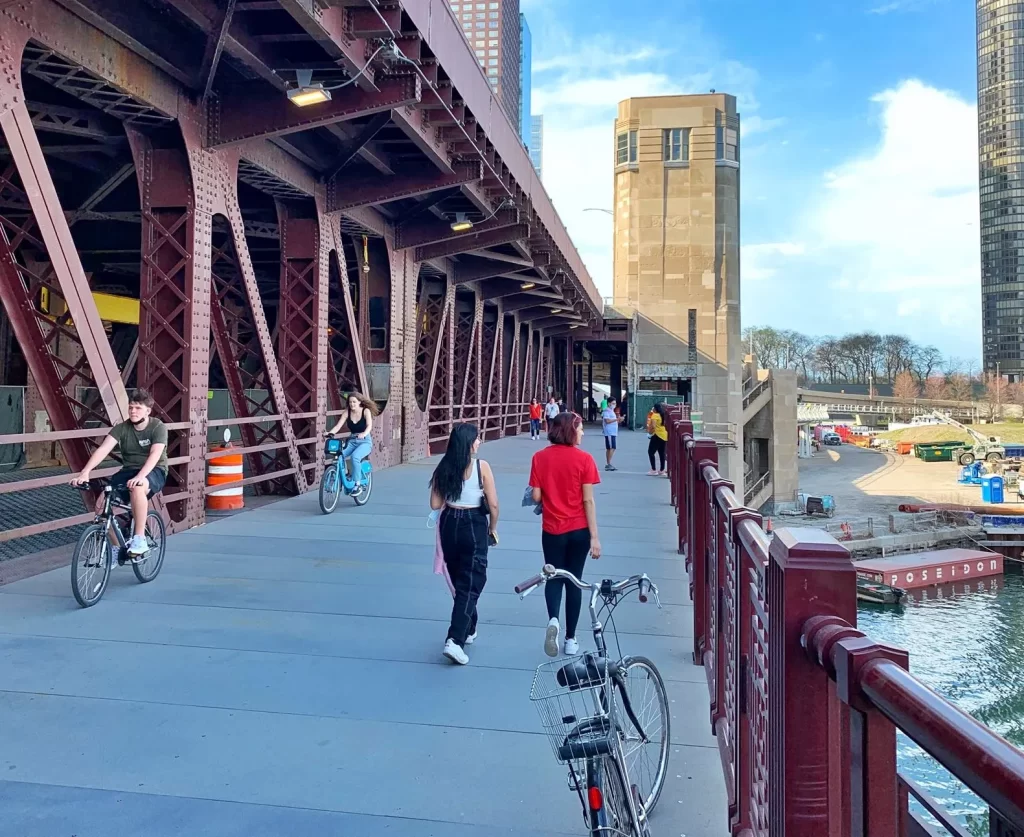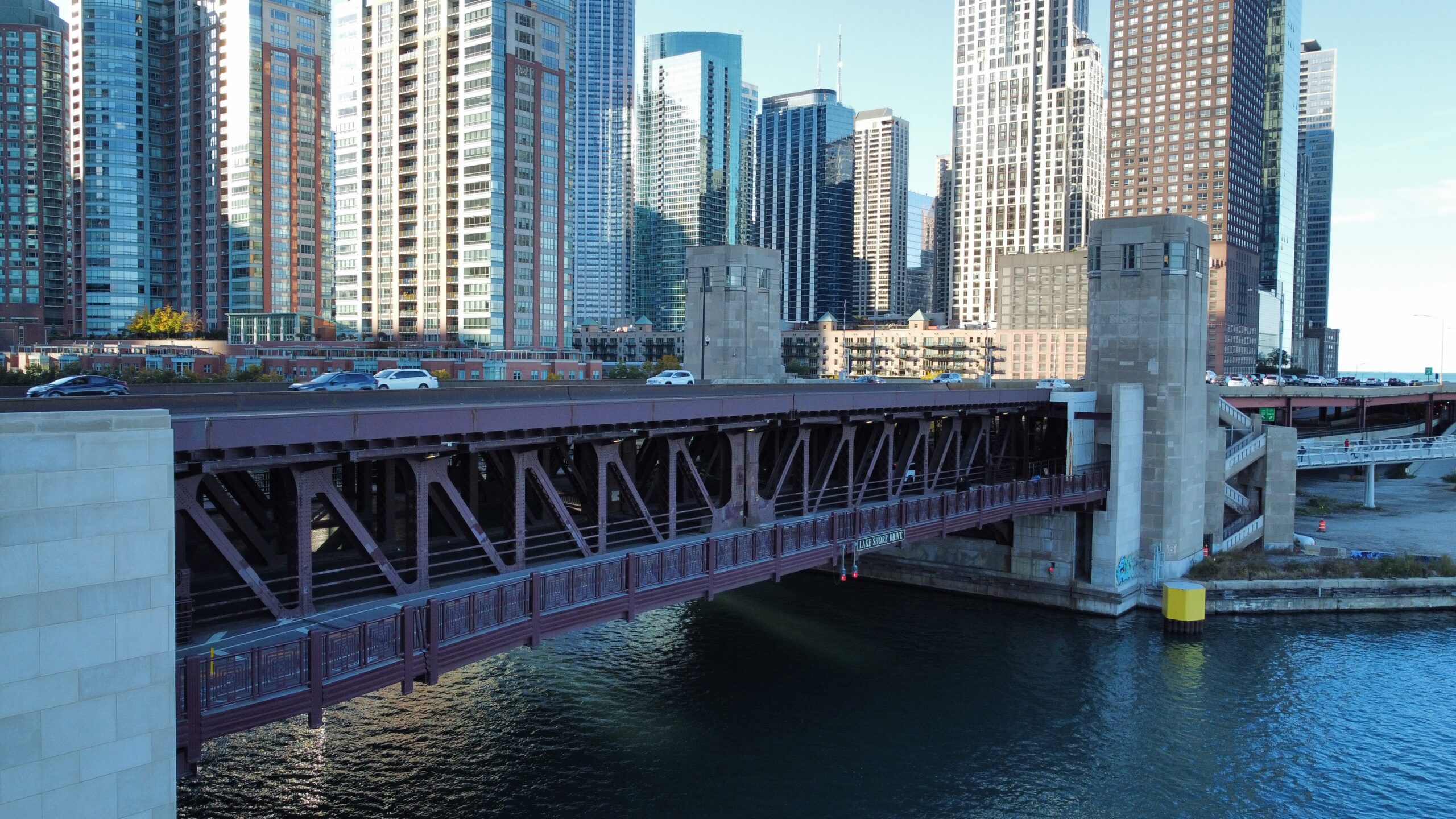Chicago Department of Transportation (CDOT)
WSP
Phase II & III Engineering Services
Chicago, IL
2021
Lakefront Trail Widening at DLSD Bascule Bridge – Lake Shore Drive over Chicago River
HBM Engineering Group, LLC was involved in a complex and innovative project aimed at the expansion and enhancement of the Lakefront Trail at the DLSD Bascule Bridge, which spans Lake Shore Drive over the Chicago River. The existing structure, dating back to its original construction in 1937 and a major alteration in 1987, posed unique challenges and opportunities for revitalization.
Key Components of the Project:
Chicago River Bascule Bridge (SN 016-6030):
- The existing bridge featured a double-leaf, twin-level trunnion bascule design with operable movable leaves.
- The upper level consisted of three northbound and four southbound lanes.
- The intermediate level housed two northbound lanes, four southbound lanes, two sidewalks, and a bicycle path.
- The bridge comprised north and south approach spans and two bascule leaves, each forming a level of the main river span.
Pedestrian/Bicycle Bridge South of the River (SN 016-1405):
- A six-span structure supported by steel column bents, a reinforced concrete pier, and a reinforced concrete abutment.
- The structure accommodated pedestrians and cyclists with a reinforced concrete deck.
Lake Shore Drive – Wacker Drive Intersection Bents 1-5 (SN 016-6491):
- A two-level structure with a mix of spans, including continuous rolled steel stringers and reinforced concrete decks.
- The bridge featured a substantial width and length, making it a prominent feature of the Lake Shore Drive roadway network.
Lake Shore Drive from Chicago River to Ogden Slip (SN 016-6103):
- A 5-span structure with multiple steel stringers and two traffic levels, providing a vital transportation link.
HBM’s Scope:
- Existing Document Review and Field Inspection: Conducting thorough document reviews, field inspections, and preparation of field notes to inform the project’s engineering and design.
- Structural Analysis and Design: Performing structural analysis and design work for a range of project components, including;
- Pedestrian Ramp Modifications
- North Slab-Bridge Construction
- Rehabilitation of Counterweight Pits
- Extensions and Modifications of Bents
- Bridge House Modifications
- Repairs to fixed portions of the bridge, and
- Design Support for the movable span.
- Specifications and Special Provisions: Developing specifications and special provisions, along with quantity calculations, to guide the construction process.
- Shop Drawings Review: Reviewing and providing feedback on shop drawings to ensure alignment with project requirements.
- Phase III Construction Support: Offering support during the construction phase, including quality assurance and quality control (QA/QC) activities to maintain project integrity and safety.

Innovative Techniques: Two noteworthy innovations were incorporated into the project:
- Façade Wall Replication: To preserve the original architectural features of the bridge, the façade wall was replicated on the east side and supported on a new foundation. Micro-piles were used to minimize environmental impact and avoid potential damage from pile driving near the existing structure.
- Movable Hinged Sidewalks: The design introduced hinged sidewalk sections, each 24-feet wide by 40-feet long, to maintain Coast Guard clearances. These hinged sidewalks were independently balanced bascule structures, supported by the existing structure and new micro-pile foundations. This innovation facilitated the widening of the sidewalk without impacting existing bridge towers, representing a first-of-its-kind design globally.
Complexity and Achievements: The project involved addressing the complexity of maintaining an operable structure throughout construction. The rehabilitation and widening efforts required intricate design, precise adjustments for balance, and the introduction of innovative elements, such as the movable hinged sidewalks. Furthermore, the project was marked by a commitment to maintain continuous trail access for up to 30,000 daily users while achieving the project’s engineering goals.







